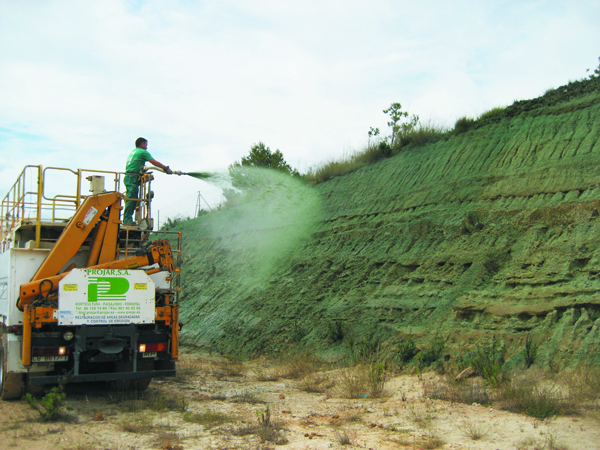

We may earn revenue from the products available on this page and participate in affiliate programs. Learn More ›
The process of hydroseeding is garnering attention from homeowners who want a new approach to a beautiful lawn, especially in large areas that are difficult to seed. Unlike laying sod or applying dry seed, this seeding method uses a sprayer to spread grass seed, fertilizer, water, and other chemicals at one time to create healthy topsoil for your new lawn to grow.
In hydroseeding, grass seed, water, fertilizer, mulch, and a bonding agent are combined in a large tank to create a loose slurry. The mixture is then sprayed directly onto soil through a discharge nozzle. It’s an alternative to both laying down sod and conventional dry-seed application, in which seed, fertilizer, and mulch are applied individually and then watered. (Though a precise process that requires no specialized equipment, conventional dry-seed application takes longer and involves a fair amount of labor.)
Hydroseeding (also called “hydraulic mulch seeding”) was developed in the 1940s to efficiently “blow” seed onto inaccessible slopes. Still a cost-effective way to establish grass along roads and other commercial properties, hydroseeding is now being used for some residential properties. Hydroseeding offers several benefits for you and your yard, including:
- Cost effective: Hydroseeding a large area is less expensive than sodding with mature grass.
- Quality grass: Hydroseed mixtures coat grass seed in mulch and fertilizer, so seeds germinate faster than with other methods.
- Erosion control: Hydroseed holds moisture and protects against erosion from wind, rain, and pests.
- Weed prevention: Hydroseed mixtures contain fewer weed seeds, and grass seed is coated in a slurry to help germinate and stamp out weeds while growing.
- Professional application: A professional hydroseeding company can apply the hydroseed mixture quickly.
When to Consider Hydroseeding Your Lawn
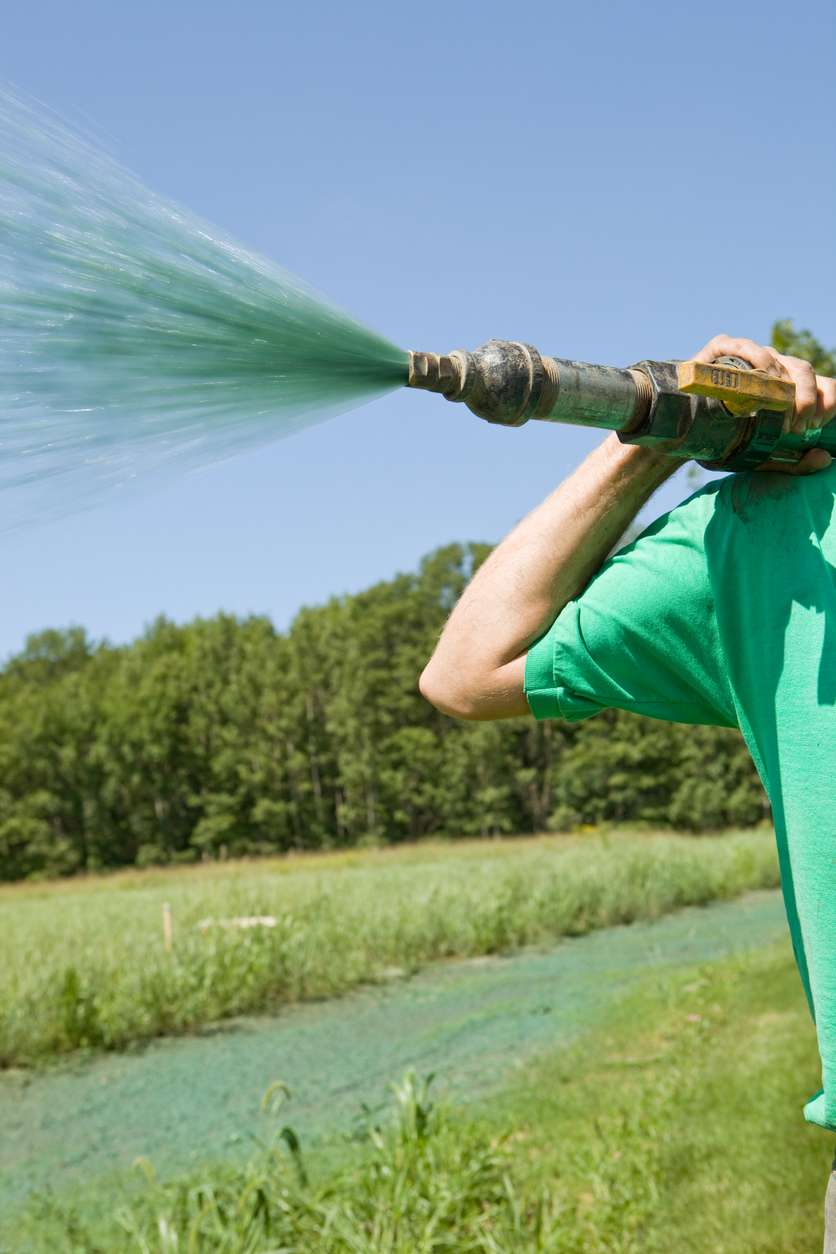
Hydroseeding is used to grow grass in both commercial and residential settings. Contractors use hydroseeding to cover broad slopes and large swaths of open ground created during the construction of highways, housing developments, office parks, and other building projects. Since these bare slopes lack vegetation, hydroseeding is a means of growing grass quickly to provide ground cover and prevent erosion from heavy rain or high winds.
Hydroseeding also has other commercial applications. It’s often used to seed large fields to grow grass that can feed grazing animals or to seed playing fields for sports. Since hydroseeding is applied using a large truck-mounted grass seed sprayer that can distribute seeds hundreds of feet away, it’s an effective means of planting grass in hard-to-reach places that would be difficult if not impossible to seed or sod by hand.
Hydroseeding is also an effective solution for controlling erosion along stream banks and coastlines. Hydroseeding these areas establishes grass with root structures that halt this erosion. Hydroseeding is also sometimes used to revegetate large areas following wildfires.
Although we mainly associate hydroseeding with growing grass, hydroseeding can also include wildflower seeds. Wildflower hydroseeding is often used to beautify and provide erosion control for highway medians and other open areas.
While hydroseeding began primarily to meet commercial needs, more and more landscaping companies are using this method to seed residential yards. Historically, homeowners have had two options when it comes to seeding their lawns: dry seed and sod. Dry seed takes a significant amount of time and doesn’t always work, while sod is very expensive.
Hydroseeding is more effective than dry seed and more affordable than turf. Homeowners can purchase hydroseeding kits online, or hire a landscaping company to treat the yard. Hydroseeding is handy for:
- Large slopes on construction sites
- Seeding in places that would be difficult to seed manually
- Highway medians
- Revegetating burned areas
- Playing fields
- Large grassy areas around industrial complexes, office parks and schools
- Stabilizing waterside slopes
- Homes with large yards
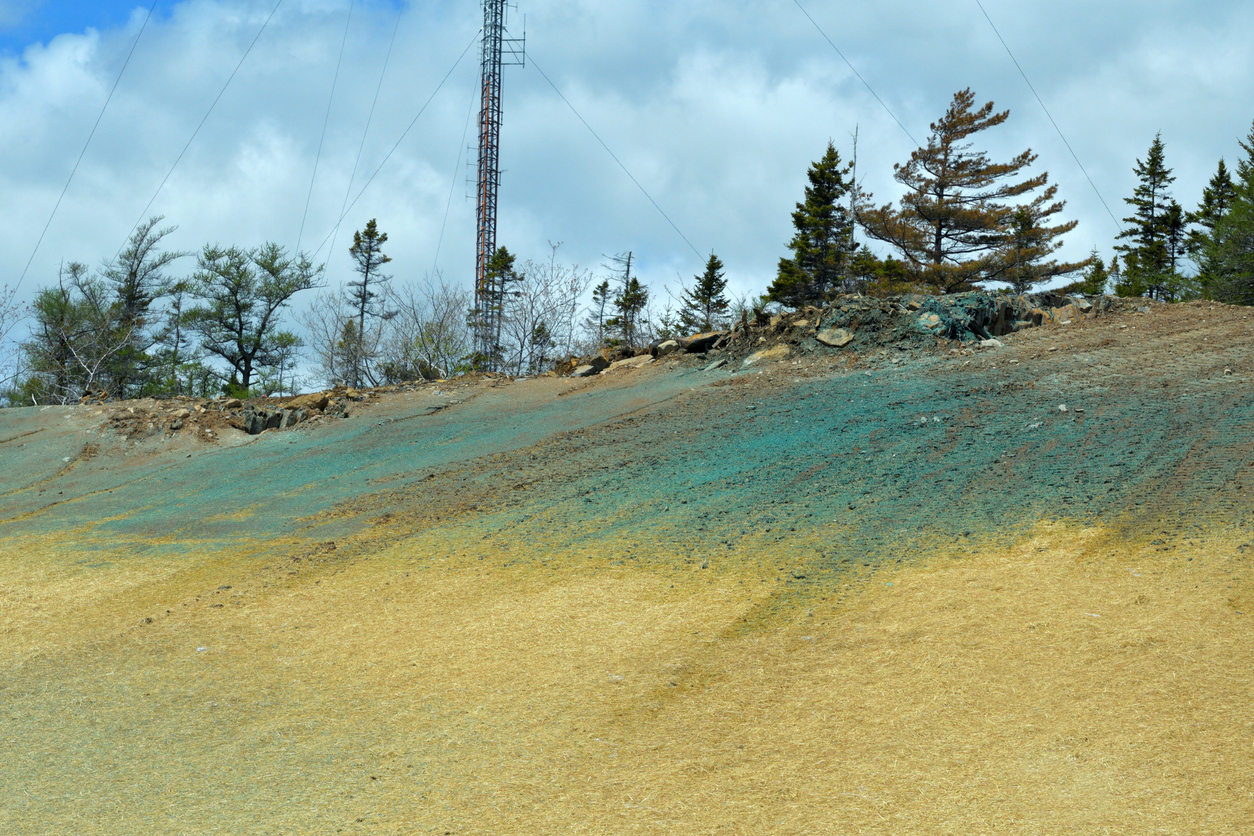
Hydromulching vs. Hydroseeding
Although hydromulching and hydroseeding are terms that are often used interchangeably, they are not the same thing. Hydroseeding consists of a slurry of mulch, seed, fertilizers, water, and other amendments. This mix provides not only the necessary seed and fertilizer but also mulch for grass seed.
The intent of hydroseeding is to create vegetation that will provide an attractive ground cover and control erosion, especially on slopes or areas that have been damaged by land disturbances such as construction or wildfires, and to create ground cover for residential yards. Since hydroseeding is a fairly expensive method of seeding, it’s typically reserved for larger areas.
Hydromulching or spray mulching, in comparison, contains no seed and consists of a mulch and tackifier. Hydromulching is designed to provide a temporary barrier over bare earth to control erosion. Hydromulch can consist of a variety of materials. Some hydromulch is 100 percent cellulose, which is made of recycled cellulose fibers. Higher quality hydromulch consists of 100 percent wood fibers that are taken from wood chips, while other hydromulch contains a blend of cellulose and wood fibers.
How Does Hydroseeding Grass Work?
Most people hire a professional for hydroseeding grass, but if you choose to do it yourself, the hydroseeding process is still roughly the same. The first step is seed selection.
There are many seeding options from which to choose: You can choose a specific grass species, or a blend of grasses. Your seed selection should be based on where you live and whether the grass needs to have heat-, disease-, or drought-resistant qualities. Hydroseeding isn’t cheap, and you won’t want to have to do it over again. For this reason it’s important to complete to the following steps after choosing the appropriate seed:
- Perform a soil test. Grass won’t grow properly if the soil is too alkaline or acidic. For grass to thrive, the soil pH should be between 6.5 and 7. Use lime, sulfur, or compost to adjust the pH if needed.
- Hydroseed should only be applied to bare soil, so remove weeds, rocks or other debris that may inhibit the seeds from reaching the soil.
- Next, grade the soil about 3 inches to prevent the slurry from going outside the area where it might damage nearby structures.
- Apply a 2-inch layer of topsoil and compost, which will provide the necessary nutrients for the new lawn to thrive.
- Prep the hydroseeder by turning on the tool’s agitator, which will mix all of the components to a nice slurry.
- Apply the seed using the sprayer and hydraulic machine. Although the hydroseed mix is messy, it’s nontoxic.
- Maintain the area by watering two or three times a day. Grass should begin to grow in about 7 to 10 days. The grass will need time to establish its root system before it can endure foot traffic, so rope off access to the area for about 4 to 6 weeks, then limit the grass to light use for the next 3 or 4 months.
Types of Mulch Used in a Hydroseeding Slurry
A variety of mulches are used for hydroseeding. Each mulch fits a specific need, including cost efficient, premium, erosion control, stabilizing slopes or landfill cover.
- Paper mulch is an affordable mulch additive, making it ideal for applications in which keeping cost under control is a factor and quality is secondary. It’s effective for flat open fields around industrial areas or highway medians and some yards.
- Wood fiber mulch is more expensive than paper mulch, but does a better job at preventing erosion and promoting vegetation growth. Wood mulch is a good choice for slopes or premium lawns.
- A wood/paper blend of 70 percent wood and 30 percent paper mulch offers better erosion control and promotes better grass growth than paper mulch can, but at a more affordable price than wood fiber mulch.
- Straw hydromulch requires less water, is easier to load into the sprayer, and provides more uniform coverage than paper or wood. These characteristics make it the mulch of choice for growing a lush yard.
- Erosion control mulch, as its name suggests, is designed specifically to halt erosion. As such, it’s the best choice for controlling erosion on slopes or waterside areas.
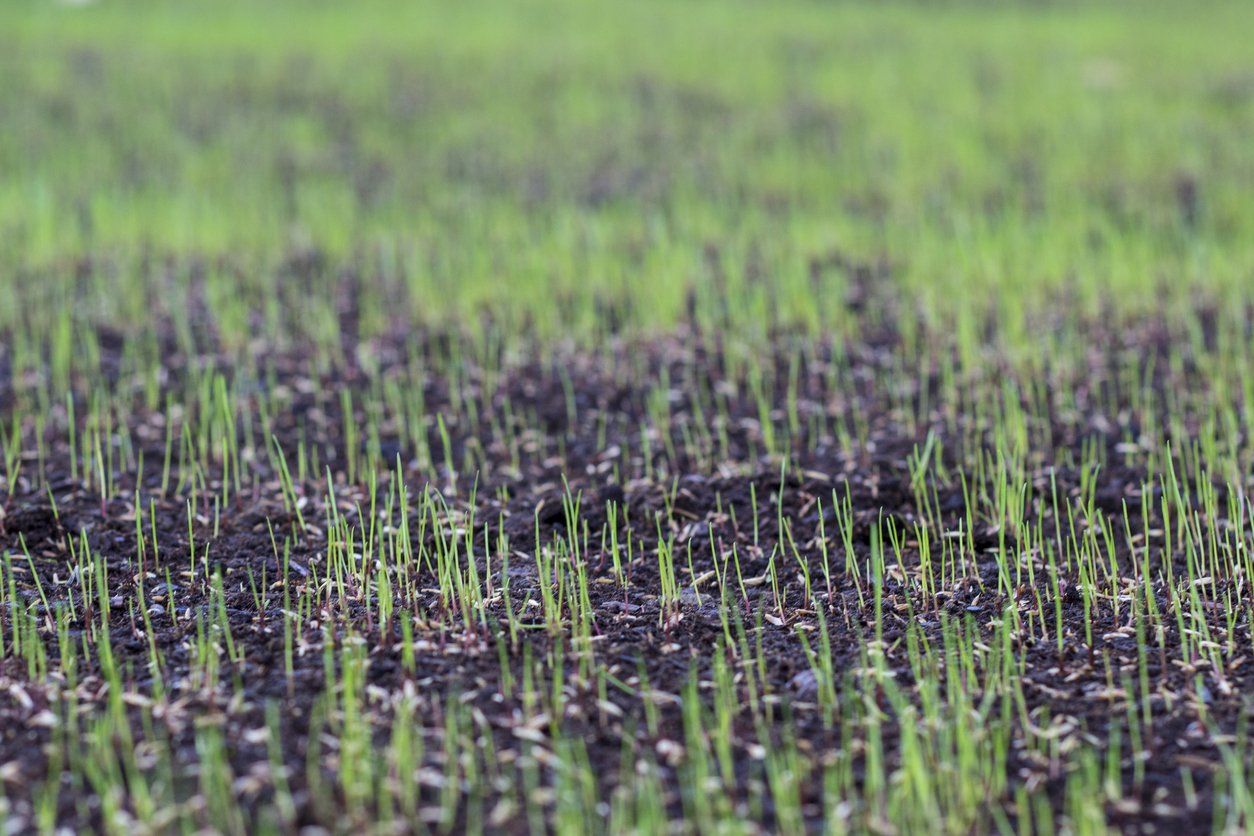
Types of Hydro Grass Seed Used in Hydroseeding Slurry
Hydro grass seed is not a type of grass seed, but rather a way of distributing the seed. As such, virtually any seed can be selected as spray-on grass seed. Selecting the appropriate grass species depends largely on the climate.
- Fescue: This cool-season grass is one of the most common in the country because it has a deep root system that allows it to adapt to a variety of climates. Fescue is used on lawns to control erosion on slopes and in high traffic areas, such as playing fields, making it an ideal spray-on grass seed.
- Perennial ryegrass: Ryegrass is characterized by its bright green color and coarse texture. It germinates faster than other grass types, which is suitable for achieving erosion control.
- Kentucky bluegrass: Kentucky bluegrass is prized for its lush deep green appearance, which makes it ideal for use as a liquid lawn seed. It’s expensive, is tougher to grow than some grasses, and requires a lot of maintenance, which is why it’s mainly used for premium residential lawns.
- Centipede grass: Centipede grass has a light green color and coarse texture. It consists of blades that sprout from above-ground stems. This warm-season grass is very heat tolerant and requires little maintenance, making it a good option for erosion control or residential lawns.
- Zoysia: Zoysia is a warm-season grass that is bright green in the summer and goes dormant and turns brown in the winter. The grass is valued for its ability to choke out weeds and endure high traffic, making it ideal for use as a liquid lawn seed. It grows slowly, making it a poor choice for erosion control.
- Bermuda grass: This warm-season grass is drought resistant, grows faster than any other grass type, can tolerate many soil types, and grows well from seed, and is one of the most popular species for hydroseed grass. Bermuda grass is bright green in the summer but goes dormant and turns brown in the winter.
- Wildflower: This alternative to spray grass seed consists of a mix of drought-tolerant wildflowers. These flowers grow densely enough to prevent erosion on slopes and hilltops while beautifying the area.
Types of Fertilizer Used to Hydroseed Grass
A variety of fertilizers support hydroseeding; however there are some mixes that work better than others. Use a high-phosphorus fertilizer to promote rapid growth of new lawns. A balanced 19-19-19 mix, which includes nitrogen, phosphorus, and potassium, is ideal (The higher the number in the mix, the less filler in the fertilizer). The phosphorus stimulates root growth, providing the right base for a lush lawn.
New seedlings do not have the developed root system of an established lawn, so they can’t absorb nutrients as effectively. As such, it’s crucial to fertilize frequently after hydroseeding to encourage growth. About 4 to 6 weeks after the lawn germinates, use a turf builder that consists of mainly nitrogen to promote good top growth, and then apply a second treatment about 8 weeks later.
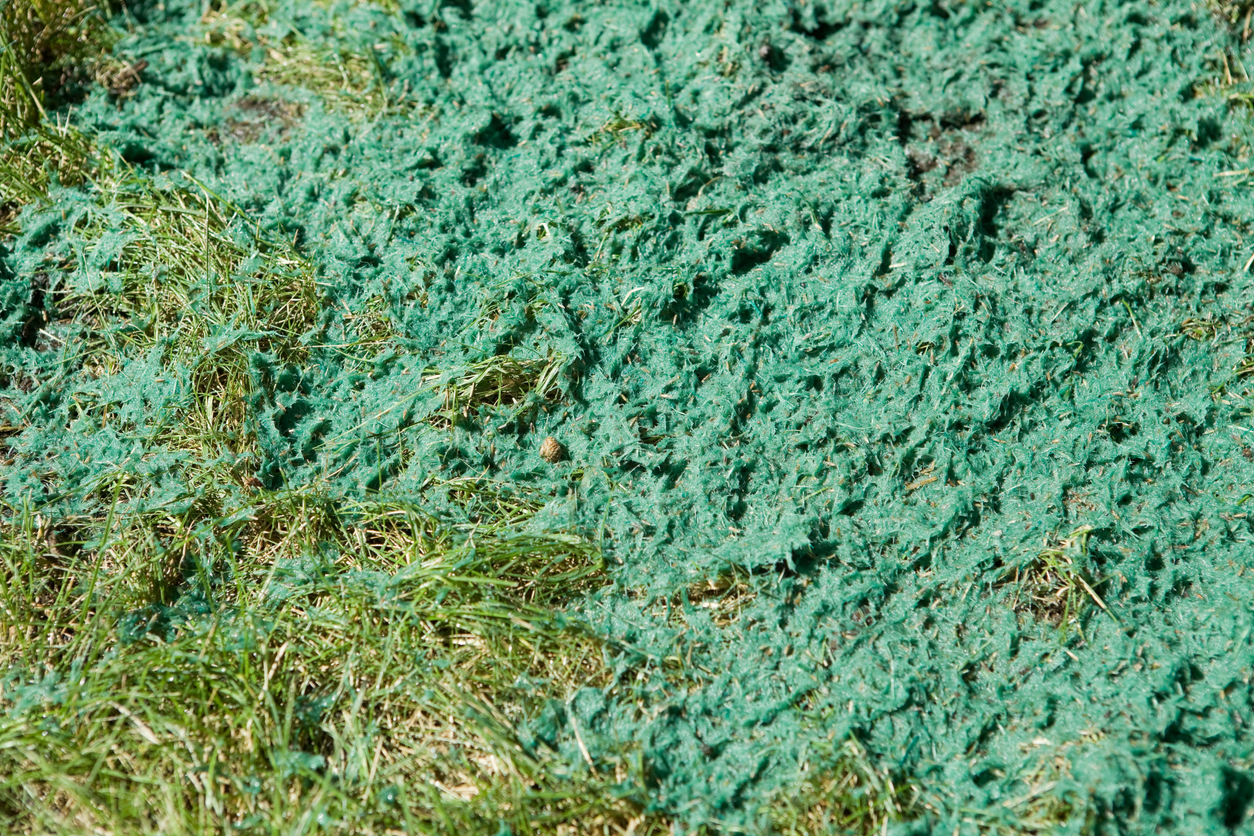
What to Know Before You Spray Grass Seed
Hydroseeding allows you to revive your lawn and strengthen the topsoil for strong, healthy growth, but it’s not for every lawn. (Yes, there are still instances in which sod or dry seed might be the better option.) Now that you have an understanding of what a hydroseeded lawn is and how hydroseeding works, you can decide whether this landscaping solution is best for your property.
If you have large areas of temperamental turf, read on to learn what to consider before hiring a hydroseeding professional to rescue your lawn.
Hydroseeding costs less than sod, but can’t deliver instant gratification.
According to the International Association of Hydroseeding Professionals (IAHP), hydroseeding typically costs from $.06 to $.15 per square foot. Its prices vary depending on conditions such as grass type, soil additives, and extreme climates.
Once the process is complete, “It takes 30 to 40 days for the lawn to come in, and you have to baby it to get it to come in thick,” says Bryan Clayton, co-founder of the lawn maintenance matching service GreenPal. This means that you will need to keep all foot traffic off the area where hydroseed is applied until the grass seeds germinate. You should be able to resume mowing your grass 4 to 6 weeks after seeding your lawn.
While not instantaneous, hydraulic mulch seeding strikes a balance between cost-effective and faster growing time than other germination methods. Sod, for example, is the go-to choice for homeowners looking to have an “instant lawn” because the mature sod lawn is harvested from a farm and planted at your home. These immediate results come at a steep installation price tag of $1 to $2 per square foot, according to Home Advisor.
The best places to hydroseed the lawn include large areas, slopes, and other areas where you need erosion control.
Hydroseeding isn’t the most economical approach for a small area due to its specialized equipment cost. (For reference, each tank of hydroseed can cover up to 3,500 square feet or more.) Ideal areas for hydroseeding include:
- Large areas with 3,500 square feet of lawn or more.
- Steep slopes where sod lawn or other germination techniques won’t work.
- Areas with lots of soil erosion from wind, water, or pests.
The value of hydroseeding is in the labor savings, as it doesn’t require an entire landscaping crew to spend hours applying seed, fertilizer, water, and mulch. Instead, the materials are applied in a single pass in just a few minutes to areas that may be difficult to address otherwise.
Water soon and frequently after hydroseeding.
A hydroseeded lawn requires a lot of water during the early stages. Keeping the seedbed moist for an extended period of time can be a time-consuming, pricey proposition.
Clayton advises, “Budget several hundred dollars for water for a hydroseeded lawn.” For the first 2 weeks, you’ll need to program your sprinkler to water three to four times a day for at least 15 minutes. Over the next 2 weeks, watering should gradually decrease in frequency but increase in duration.
One month after a visit from your hydroseeder, the lawn will need 1 to 1.5 inches of water per week, which is the average amount for a regular lawn, depending on the grass type.
The best time of year to hydroseed a lawn is spring or fall.
According to the IAHP, spring and fall are the best seasons for hydroseeding because warm soil and moderate rain help young grass seedlings grow deep roots. Summer heat will help grass germinate and grow faster, but you’ll likely have to water more often. It’s not recommended to hydroseed in winter because the grass usually is dormant and will not germinate until the weather warms.
Hydroseeding is not a DIY landscaping project, so choose your professional wisely.
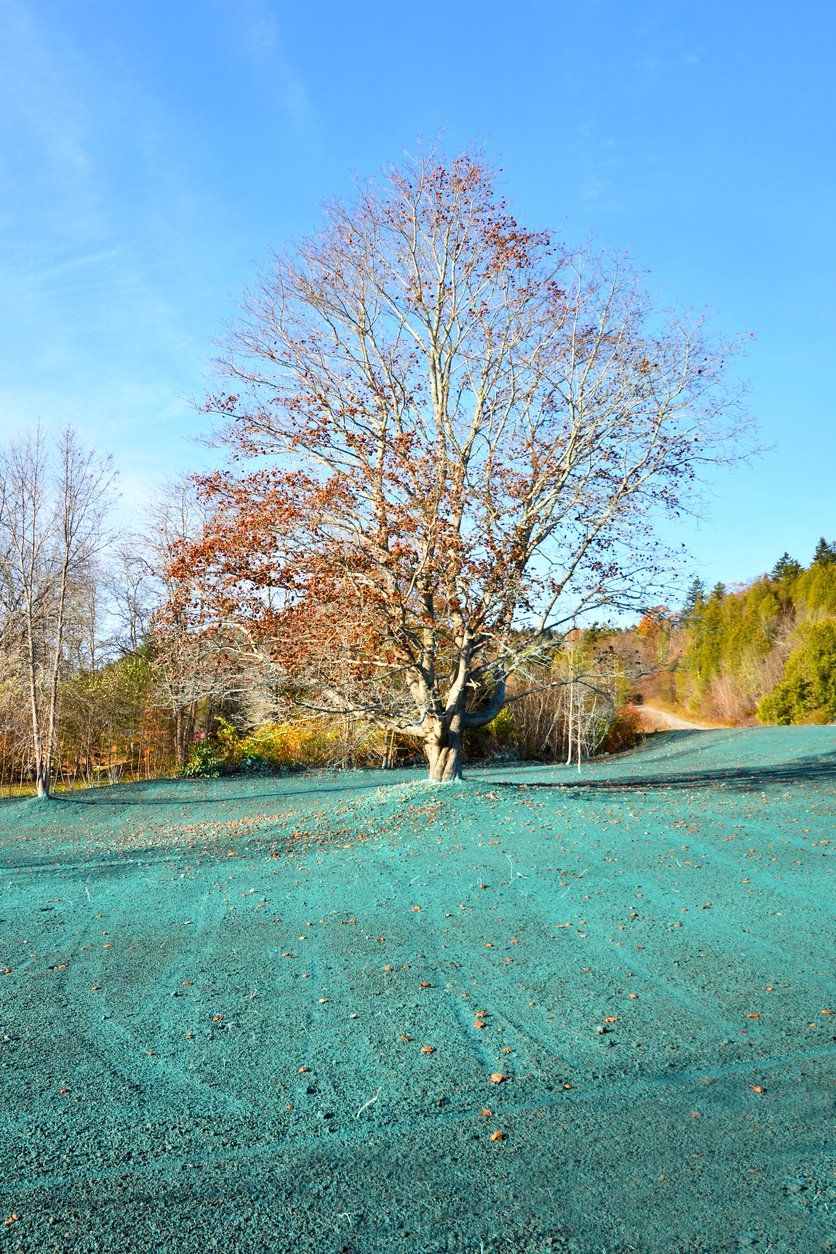
While you can take on most yard work, hydroseeding likely is not one of those projects. The slurry is challenging to mix when you lack the specialized equipment used by hydroseed services to ensure the proper blending of grass seed, mulch, water, and fertilizer. Some states even require licensure to apply some of the additives in the hydroseeding mixture.
The IAHP suggests using Hydroseeding Experts to find qualified, licensed contractors in your area. “Be leery of landscapers who say they can hydroseed your lawn,” Clayton cautions. “Most landscapers subcontract hydroseeding because a hydroseeding rig costs several hundred thousand dollars and very few landscapers actually own one. Odds are, they’re just acting as a middleman and marking the job up as much as 30 percent.”
It can take 5 to 6 weeks for hydroseed to take firm root, so be prepared to block off foot traffic during this time. Even after this period has passed, the lawn will need time to establish itself, so foot traffic should be kept to a minimum for the first 3 months. This will allow the grass to establish a strong root system and for the grass blades to mature.
Final Thoughts
Hydroseeding is an effective means of quickly establishing ground cover and erosion control over large areas for both commercial use and residential use. It’s commonly used to quickly vegetate large open areas of bare soil and create beautiful residential lawns. It’s more affordable and less labor intensive than planting sod and produces results more quickly and with a higher success rate than hand seeding.
Keep in mind that hydroseeding, like sod and hand seeding, requires preparation and maintenance to build and keep a lush lawn. Prepping the area for seeding and then properly fertilizing and watering it as it becomes established are crucial to achieving a lush lawn and ensuring you receive a good return on your hydroseeding investment.
FAQs About Working with Hydro Seed
Working with hydroseed presents plenty of questions and considerations, especially if you try to do a form of hydroseeding on your own. Even when hiring a pro, however, you might have some questions before jumping in.
Q. What is hydroseeding?

Hydroseeding is a specialized method of applying grass seed (or wildflower seed) within a slurry mix to help it take root quickly. Typically performed by hydroseeding specialists, the process involves special equipment and techniques to help control erosion on slopes or revegetate disturbed areas.
Q. How much does hydroseeding cost?
Hydroseeding typically costs between $0.06 and $0.15 per square foot.
Q. How soon should I water after hydroseeding?
A lawn that has been hydroseeded requires lots of water throughout the growing stage, and you will need to water immediately and keep your lawn watered for several weeks after germination.
Q: What is hydro mousse and does it really work?
Hydro mousse is a home version of hydro spraying. Hydro mousse products come with a spray bottle containing a slurry of seed, fertilizer and mulch. The spray bottle attaches to a standard garden hose, making it easy to distribute with tools most homeowners already have in their garage.
While this method may seem like an affordable means of hydroseeding, these products typically do not yield the same results as professional hydroseeding or even traditional hand seeding.
Q: Can hydroseed be overwatered?
As with hand seeding, it is possible to overwater hydroseed. When watering a freshly hydroseeded areas, make sure to keep the mulch bed moist but don’t water to the point where there is puddling or running of water.
